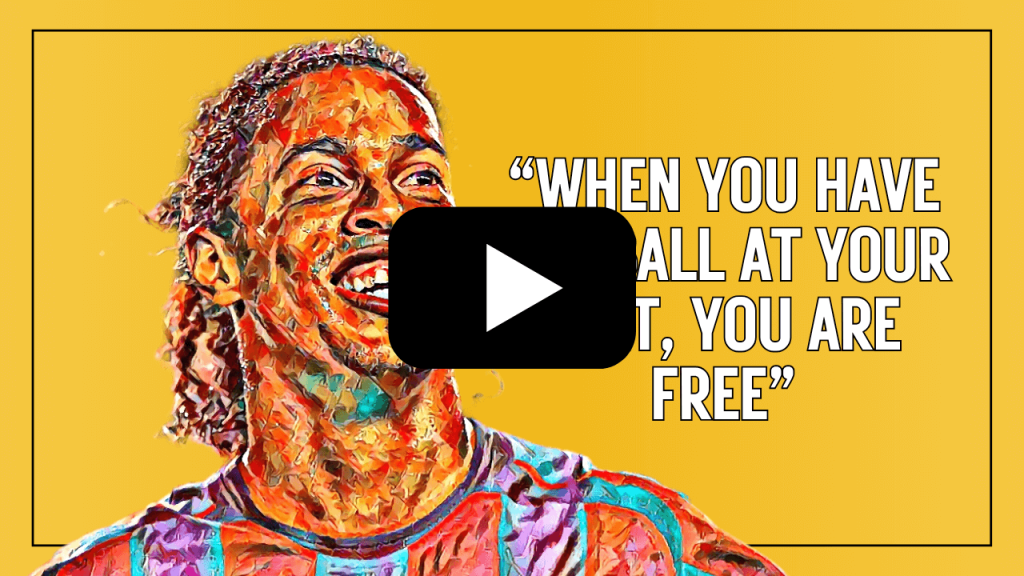There are great players. There are legends. And then there are mavericks like Ronaldinho Gaucho.
To watch Ronaldinho at his best was to witness football elevated to performance art. He played with the unfiltered joy of a street footballer, but with the precision and balance of a master technician. Defenders weren’t simply obstacles — they were unwitting participants in his choreography.
Every touch had rhythm, every movement felt spontaneous yet intentional. There was samba in his feet, and a sense that he was always one step ahead — not just of his opponents, but of the game itself.
Watching him wasn’t just entertaining — it was spellbinding.
Yet for all his brilliance, Ronaldinho’s story, like the greatest mavericks, veered away from convention. His rise was meteoric, his peak breath-taking, but his path never followed the usual script of greatness – off-pitch shenanigans often overshadowed his mercurial on-pitch talent.

Ronaldinho’s Career Snapshot
Born in Brazil’s football-mad south, Ronaldinho’s earliest skills were forged not in academies, but on gritty futsal courts and bare concrete pitches.
He carried that same street-born flair to Grêmio, then to Paris Saint-Germain, where his off-field antics began to intensify.
But it was at Barcelona where Ronaldinho Gaucho became a global phenomenon. Signed in 2003, he arrived at a club in transition — and single-handedly became the symbol of its rebirth (ahead of the second coming, in Lionel Messi).
Over the next few seasons, he would win the Ballon d’Or, two La Liga titles, and the Champions League, dazzling the world with his footwork, vision, and flair.
At his best, he wasn’t just unplayable — he was unreal. Ronaldinho was driven by joy. His genius was spontaneous – he did things not because they were efficient, but because they were beautiful.
Yet, with that freedom came fragility.
Ronaldinho’s Decline
By 2008, Ronaldinho’s star had dimmed. His commitment was questioned, his fitness declined, and the relentless schedule of modern football seemed to wear him down.
At just 28 – an age where many players peak – Ronaldinho’s career was on the wane.
Following an underwhelming stint at AC Milan, he had a brief resurgence whilst playing in Brazil – regaining his place for the Seleção – before injury ruled him out of contention for the 2014 World Cup in Brazil.
A final hoorah in his home country, followed by moves to Mexico and India, unfortunately felt like an extended encore rather than a comeback.
Questions about Ronaldinho Gaucho
Was it a waste of talent? Or simply the natural arc of someone who played the game entirely on his own terms?
These questions lie at the heart of Ronaldinho’s mystique.
In an era increasingly dominated by tactics, data, and rigid systems, Ronaldinho reminds us what football is at its core: fun.
Even years after his prime, his highlights circulate endlessly — not out of nostalgia, but because they still bring joy to watch the maestro mesmerise.
This short documentary looks at the man behind the smile: the early promise, the unstoppable prime, the curious fade, his bounce back, the final decline, off-pitch dramas, and the enduring legacy of a player who reimagined what it was to play football.
Watch the Ronaldinho documentary: https://youtu.be/uZfTWGjrNxY
